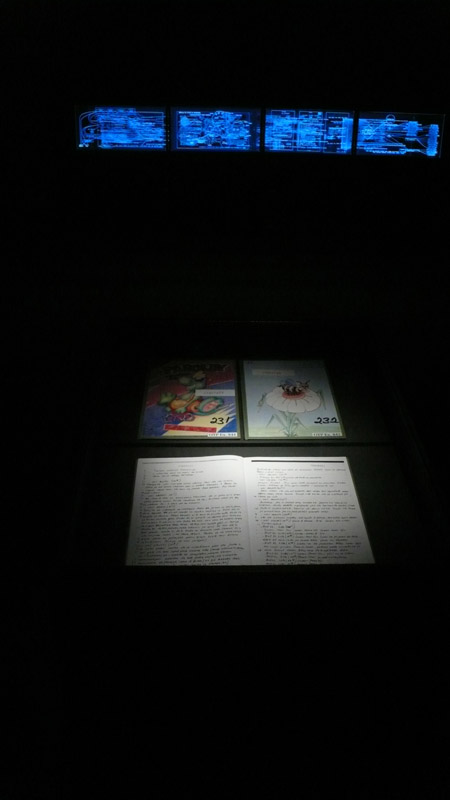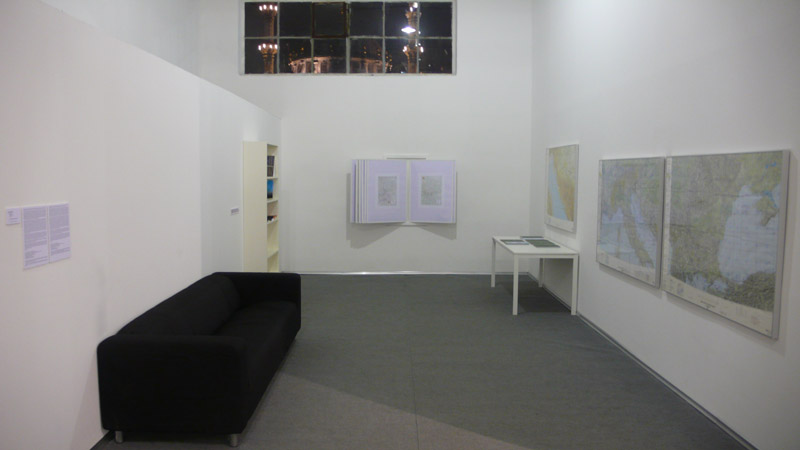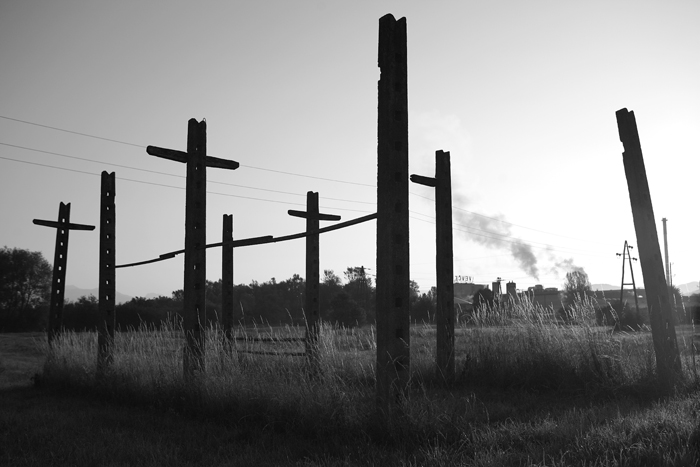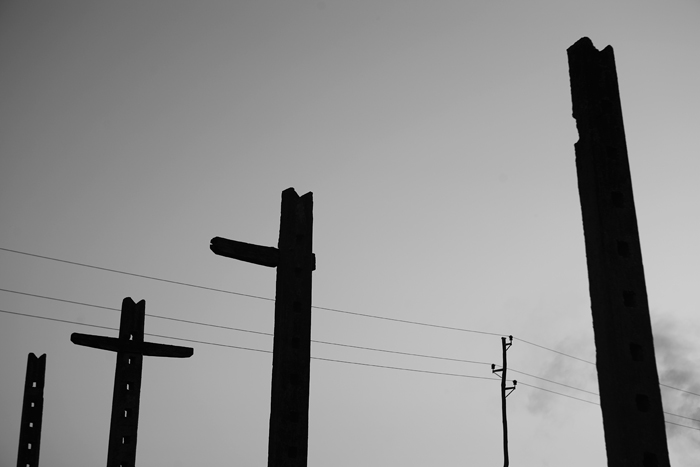A Short Guide to Contemporary Art in Slovenia (“Short Guide Series”) (Article)
I was invited to write an essay that would shed some light on the conditions of art production in Slovenia. Despite the “objective” logic that such a request implies, to somehow synthesize the views on the state and process of art production in a country, I cannot avoidapproaching the topic from a very personal point of view, as I am myself involved in many of the issues and stakes that comprise the contemporary art scene of Slovenia.
I am the editor-in-chief of Maska, a performing arts journal published by a private organization that is struggling to survive in the current conditions, while at the same time endeavoring to fill the gaps in critical discourse on contemporary art in Slovenia. Though we are a performing arts journal, we deal not only with the performing arts but with other fields as well. I also work as the project manager of Asociacija, an organization of NGO’s and independent artists that for years has struggled to improve the working and production conditions for contemporary art in Slovenia.
As many of my more experienced colleagues have found, it can be extremely frustrating for an Eastern European to try to describe comprehensively the economic, historical and cultural contradictions that pervade our lives. The reason is that, as Boris Buden has explained, post-modern discourse with its notorious proclamation of a plurality of narratives without any master narrative is a hegemonial ideological construct that has no application in post-communist or ex-socialist countries. The normative story of how after 1989 communism collapsed and liberal democracy and capitalism entered Eastern Europe has made it hard to navigate between the newly imposed ideology and the struggle to define social relations that go beyond that ideology.
In the Slovene language, Maska means “masque, a pertinent metaphor for the conditions on the Slovenian art scene today. “Masques and masquerades” are the mode in which the contemporary art scene exists and functions. The variety of masques is indeed great, but what seems to be even more interesting is what goes on not behind these masques.
At first glance, the Slovenian art scene is an active field. Maja Breznik has noted that the arts’ sphere in Slovenia is “dominated by [a] chaos of approaches and artistic strategies.”(Maja Breznik, “The Field of Cultural Production in the Sphere of Visual Arts. A report on the interviews with the participants of the research ‘Contemporary culture in the crisis of social cohesion’”, Maska, vol. XXIV, no. 121–122, Summer 2009, p. 64.)
Every year the visual arts produce many exhibitions, events, festivals, performances, multimedia events, etc. This is true of national institutions (the Museum of Modern Art Ljubljana, which just recently re-opened its doors after being closed for renovation for more than a year, and the International Centre for Graphic Arts); of local/regional institutions (Art Gallery Maribor; Museum of Contemporary Art in Celje) as well as of the independent art scene (Gallery ŠKUC; Gallery Kapelica; P74; Alkatraz; Kibla) and of the NGO sector.
The fields of visual and performing arts are also particularly active, while the music field is still in the grip of a set of very “classical” views of its practice. This is especially visible within the national institutions that, with rare exceptions, do not accept any genres outside of classical music. This does not mean that a more avant-garde sense of music is not present; it’s just that its existence is fragile and, for now, is largely left to be developed by independent promoters.
Slovenian artists and curators do work within the larger international frame, presenting work and projects at biennials, major exhibitions, festivals, and other international events. These artists are aware of the “political” importance of art and of the larger social context for artistic practice – they are, so to speak, compliant with the international tendency towards socio-political engagement/criticism. Moreover, under the influence of international trends the curator has replaced the predominance of the artist in that the curator now acts as the trend-setter and decision-maker when it comes to the endorsement of different artistic practices.
Last but not least, the allocation of state funding for the independent visual art scene is insufficient (even though it has recently been increased), nor do state institutions receive enough support to become serious players in the international art system. The state’s cultural policy shows a lack of interest in reforming the old socialist institutions, as well as in building up new institutions. As recently as in late 2009 the Ministry for Culture signed a contract for a new Museum for Contemporary Art in Ljubljana (to be completed in March 2011). This will be the first new building for the visual arts in Slovenia in more than 60 years (the current building for the Museum of Modern Art dates from 1945).
After the fall of the socialist regimes in 1989, the conditions under which art was produced in Eastern Europe became more liberal and most of the “alternative” artistic practices from the 70s and 80s that had contributed greatly to the liberalization of socialist societies began to receive support from various international sources (such as Soros’ Open Society Institute or other bodies that intervened actively in this region after the fall of the Wall).
This financial support helped create numerous NGO’s all over Eastern Europe, which all developed similar models of functioning and art production. However, after a while this international support began to wane (depending on how “fast” a country “developed”), leaving the newly created independent art scenes to deal with the under-developed and non-strategic cultural policies of each country. In the case of Slovenia, this decrease in funding meant that while the art scene still exists it has very modest funding with which to develop its position and legacy.
Two particularities seem especially disturbing in this context. The first is the uncritical adoption of the Western art system, together with its institutional critique. The second is the erasure of any geo-political context, past, or legacy. These particularities are what I alluded to earlier as the specters that surround the masques and masquerades of the Slovenian arts scene.
Let me first try to explain the second particularity, the erasure of context and historical legacy. Many active artists from the younger generations (born in the late 1970s) underestimate the fact that the “alternative” or “unofficial” culture of the 1980s was not anti-socialist but rather reformist. As Eda Cufer has noted, what the unofficial artists of the 1980s really wanted was a reform of the rigidity of state socialism, its modernization and, above all, the rehabilitation of the culture of the avant-gardes and other suppressed artistic and discursive practices.”(Eda Cufer, “Some comments on the report on the interviews with the participants of the research project ‘The field of Cultural production in the Sphere of Visual Arts’’, Maska, vol. XXIV, no. 121-122, Summer 2009 (“Re-projecting Radical Futures”), p. 82.) It may seem today as if“that the previous space of communication which fueled social reform ‘from within’ [has] already been lost,”(Eda Cufer, ibid., p. 83.) in which case one might be tempted to ask: what happened?
After 1989, when Slovenia became an independent state it was like so many countries in the region exposed to the problems of merging the ex-socialist regime into a new society. Today, many of the actors who were passionately engaged in defining the new social reality reflect that their struggle was not really to adapt to the capitalist system and the pervasive neo-liberal ideology. Rather, they wanted to develop relatively democratic and ethically organized structures and models of production. These however began to emerge in the 1980s according to such democratic and liberalizing strategies as would “enable and empower articulation and historical production of local subjectivity and its inscription in transnational realms.”(Eda Cufer, “Feelings and Territories: Introduction to Territory 1995,2006–09”, Maska, vol. XXIV, no. 125–126, Autumn 2009 (“Art, Society and Feelings”), p. 36.)
This, unfortunately, proved impossible, as the scenarios that the international art system offered to the local context were “oftentimes alien or even ethically unacceptable with regards to that culture’s previous strategies of democratization and liberalization.”(Ibid.) The international art system has marginalized the specifically local problems according to its own ideology and needs, despite initial resistance on the part of local actors. The reformist stance of the 1980s and early ‘90s was corrupted by these tempting new models of (Western) art production, unable to explore and develop its own models. The damage this has caused can be seen in the difficulties local art scenes have in developing larger projects based on solidarity and collaboration.
 The state and conditions of art production in Slovenia not only reflect the tumultuous change of socio-political conditions and the invasion/importation of Western neoliberal models into the local context; they also reflect the ignorance of local cultural politicians. These politicians did not encourage the reform of art institutions or support the democratic liberalization and synergies of the alternative art practices, never granting them a say in the decision-making processes as they designed the new societies of the early 1990s.
The state and conditions of art production in Slovenia not only reflect the tumultuous change of socio-political conditions and the invasion/importation of Western neoliberal models into the local context; they also reflect the ignorance of local cultural politicians. These politicians did not encourage the reform of art institutions or support the democratic liberalization and synergies of the alternative art practices, never granting them a say in the decision-making processes as they designed the new societies of the early 1990s.
We like to say that, in Slovenia, cultural policy is non-existent; but more and more it seems to me that this is not true. There is a cultural policy in Slovenia. The problem is that whereas it once had a conservative, rigid, and undefined position, it is now under the influence of certain not-so-subtle neo-liberal trends involving the commercialization and privatization of the public space, with a provincial strain of bourgeois elitism added into the mix. At the same time, this cultural policy is extremely hostile to the NGO sector in arts and culture, especially if we consider that the cultural policy is determined by a framework of state paternalism – meaning that culture is, by law, taken care of by the state and by public funding.
The alternative art institutions and organizations, as well as new generations of artists and cultural workers, lack financial means, infrastructure, and organization on a systemic level. Many of them search for recognition (according to the rules of the Western art market and neo-liberal ideology). Others keep fooling themselves that by pushing socially critical contents into the art system they will have a realistic chance to generate a political community that could have an impact on the general society. As Boris has Groys remarked. “an artist operates on the same territory as ideology. The affirmative and critical potential of art demonstrates itself, therefore, much more powerfully and productively in the context of politics than in the context of the market.”(Boris Groys, Art Power, MIT Press, Cambridge, Mass., 2008, p. 8.)
It is at this point that we encounter the uncritical adoption, in Eastern Europe, of the Western art system together with its institutional critique. It is fascinating to see how local actors in Slovenia on the one hand create socially critical art projects – projects that criticize the institution of art – and promote them without any further ado on the trans-national, hierarchical art market. They do not realize the inescapable de-politicization that comes with their integration into the Western art system.
 This point is linked to the disappearance of historical memory under neo-liberalism – something that has already spread across the local territory and is accompanied by a complete lack of a critical reflection on the present global situation. If institutional critique in the Western art system produced the “institution of critique”, then any Eastern European artist who tries to criticize her/his own institution is, like his or her Western counterpart, caught up in a loop whereby her criticism is co-opted by the very institution it sets out to criticize. On the other hand, when an Eastern European artist criticizes Western institutions she is often labeled as a conservative or a nationalist because she supposedly does not understand how Western institutions work – her critique reveals her own lack of understanding of the West’s logic of progress.
This point is linked to the disappearance of historical memory under neo-liberalism – something that has already spread across the local territory and is accompanied by a complete lack of a critical reflection on the present global situation. If institutional critique in the Western art system produced the “institution of critique”, then any Eastern European artist who tries to criticize her/his own institution is, like his or her Western counterpart, caught up in a loop whereby her criticism is co-opted by the very institution it sets out to criticize. On the other hand, when an Eastern European artist criticizes Western institutions she is often labeled as a conservative or a nationalist because she supposedly does not understand how Western institutions work – her critique reveals her own lack of understanding of the West’s logic of progress.
The situation is complex and offers no easy solutions; still, we need to ask ourselves if there is “a possibility of such a critique of institutions, which will go beyond both the compradorial critique from the liberal positions as well as the conservative, protectionist critique”?(Buden, ibid.) Buden’s answer lies in the idea that we should remember the past of our common political struggles; therefore, we need to rearticulate our social experience. But how can we do that?
Buden’s may well be the most pertinent question that the Slovene art scene has to tackle before it can develop a constructive, active, and collaborative attitude – both towards global reality and towards its own stagnancy. Only by ceasing to bury our heads in the sand and by facing complexity with a critical awareness of the present situation can Slovenian art re-articulate its past and future.
For related texts, please see A Short Guide to Contemporary Art in Ukraine (“Short Guide Series”).








